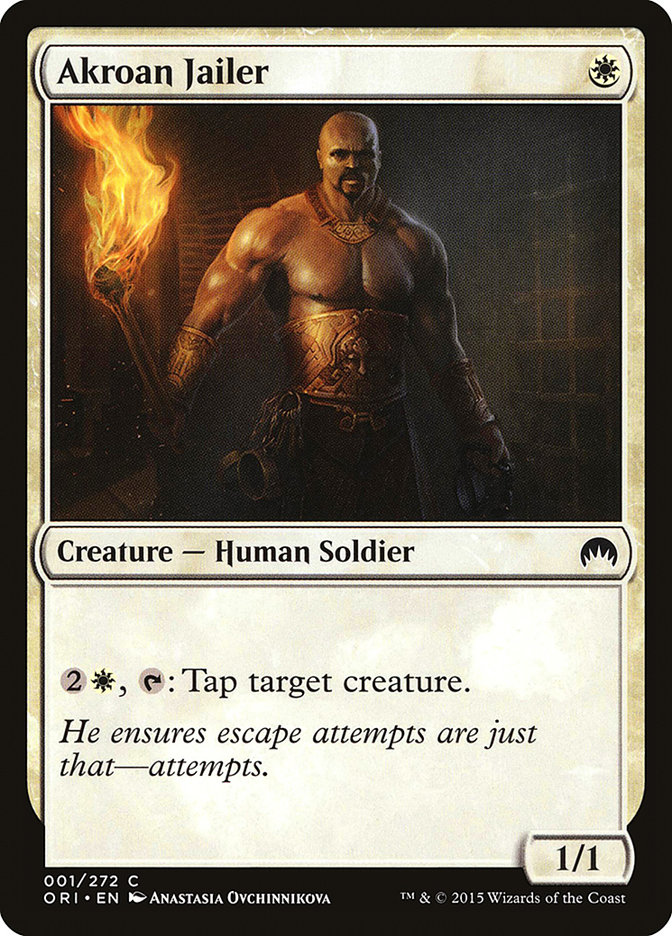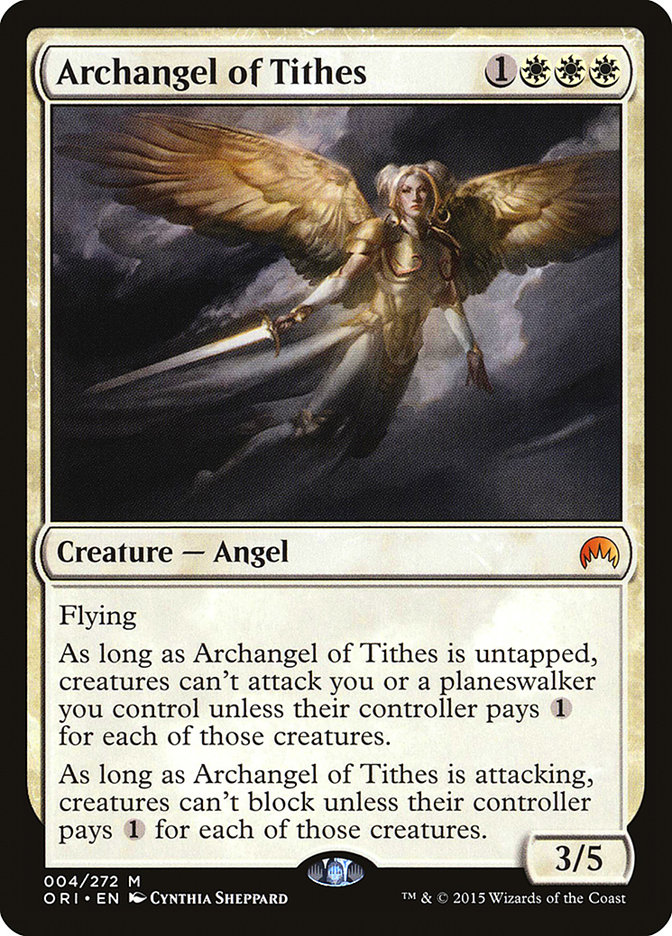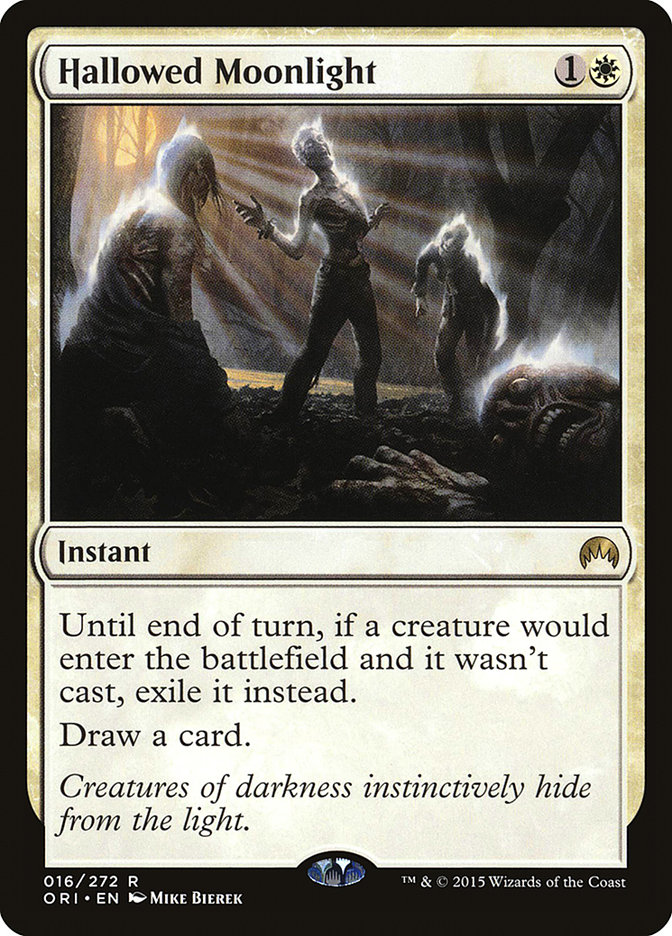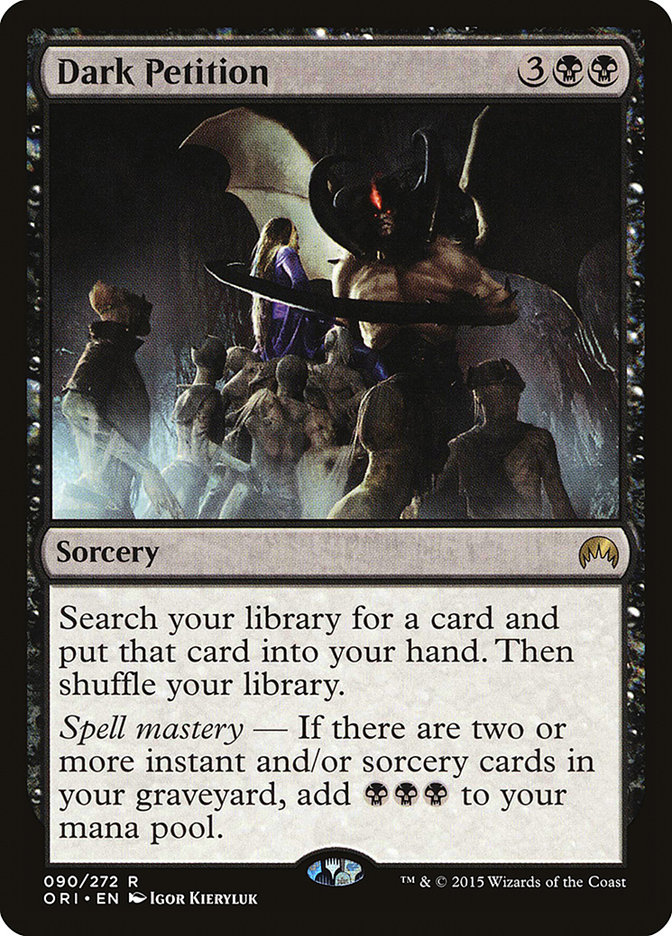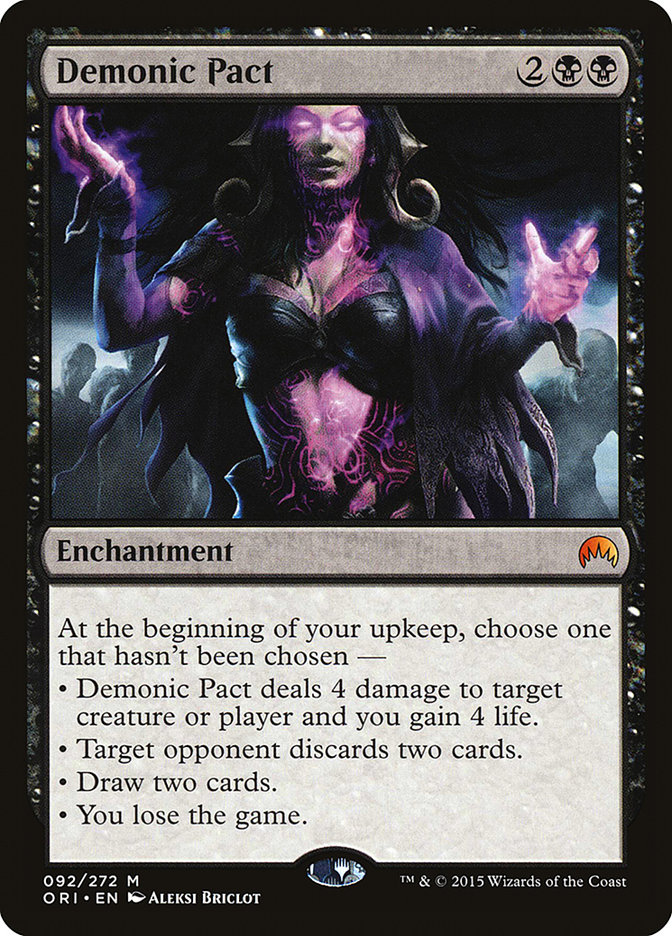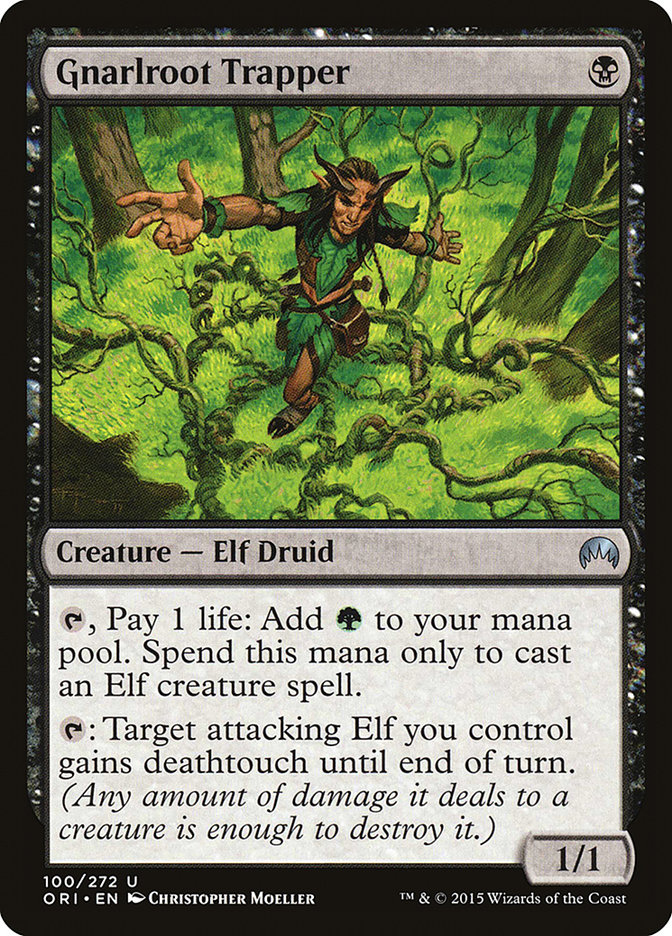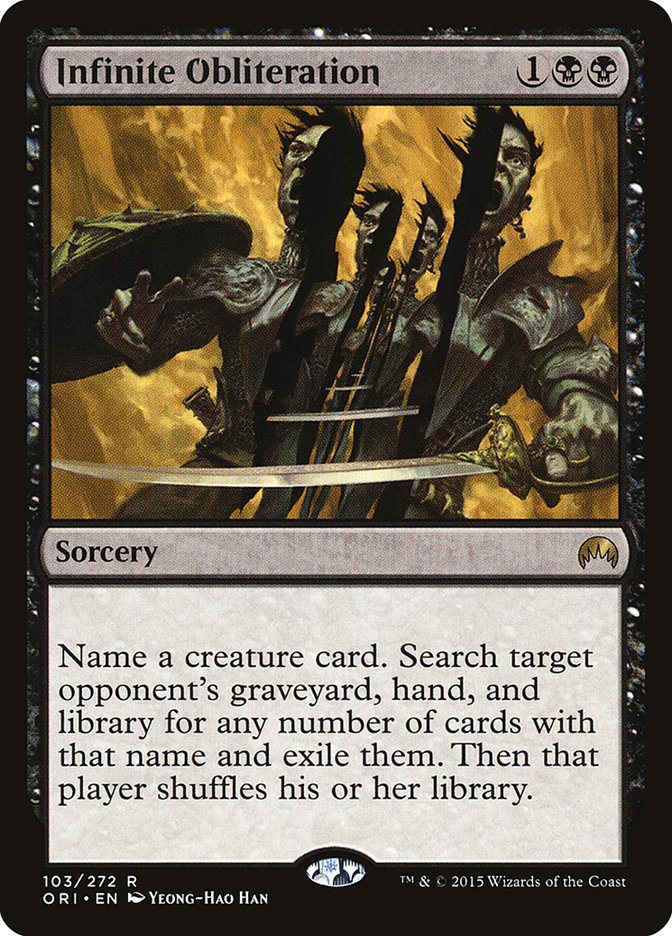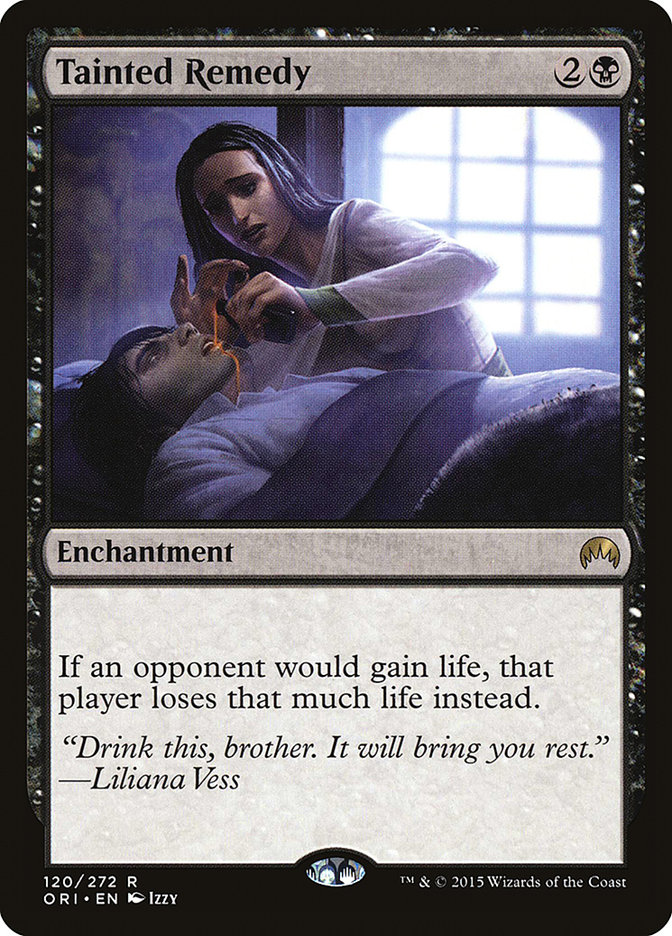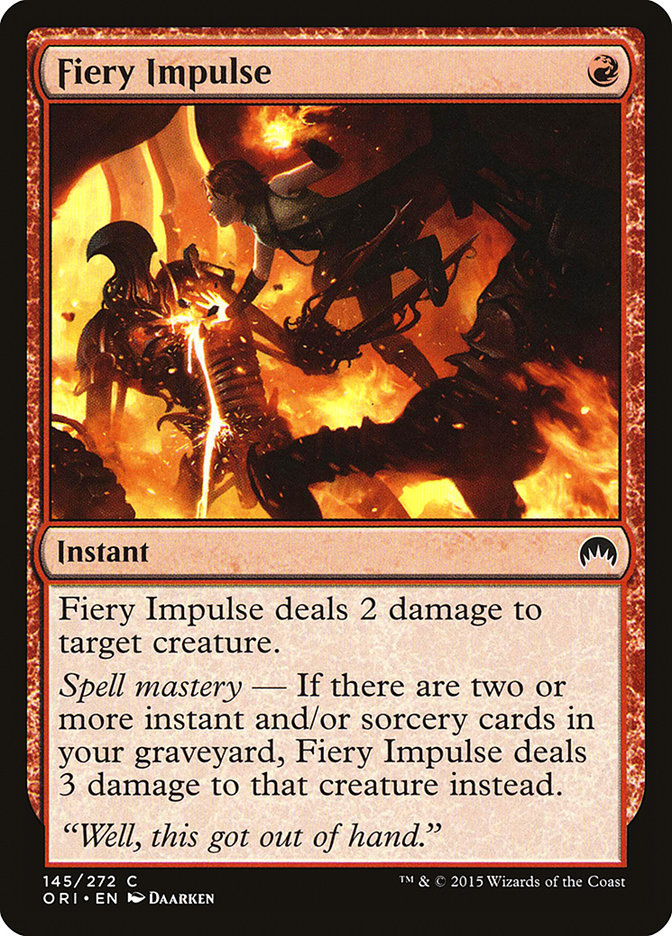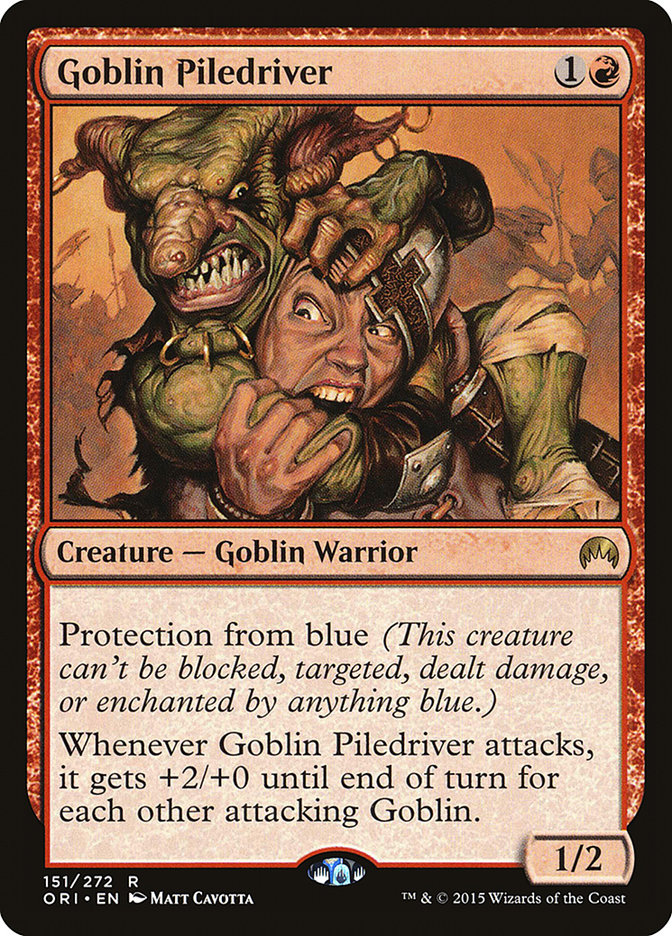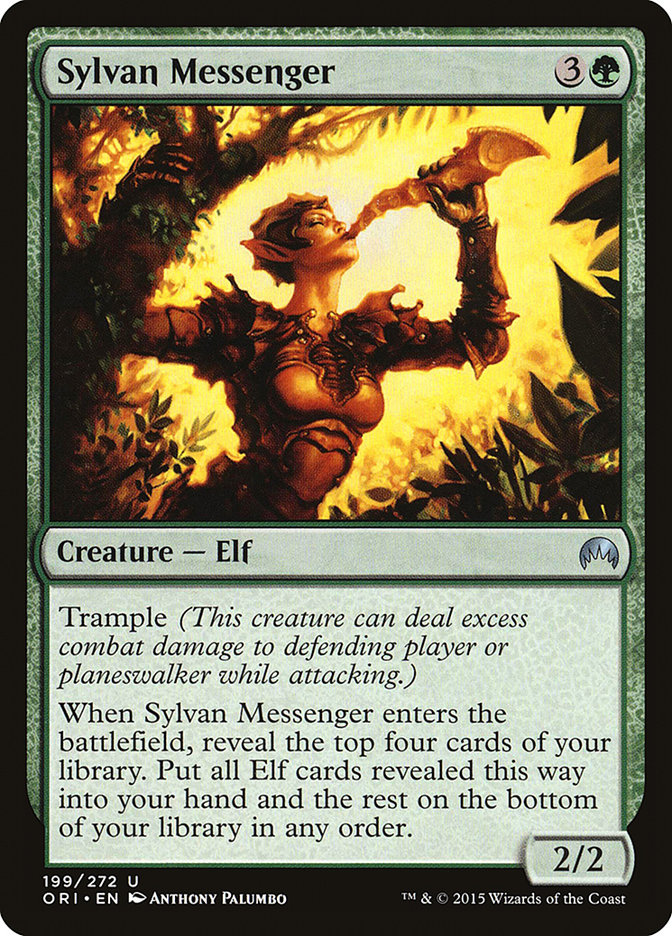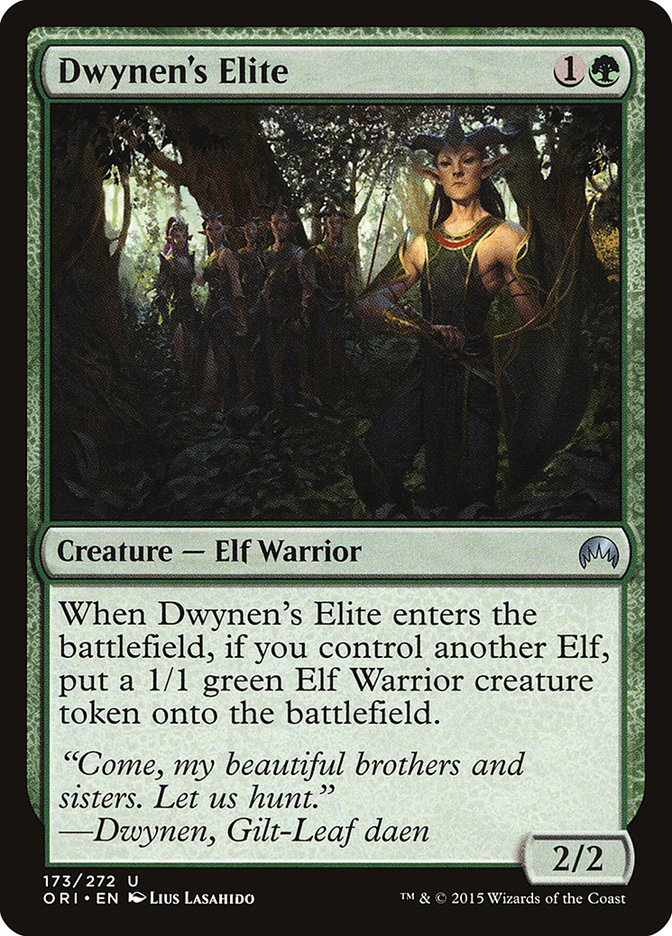This week has been a pretty exciting one for Magic. There were two Grand Prix in regions of the world that are largely underserved by Organized Play, the results of which have made a certain race much more interesting. There were several big policy announcements that are sure to shake things up at the next Pro Tour, and – of course – a whole bunch more cards from Magic Origins revealed, many of which are certain to have an impact on the PT as well!
Let’s start from the top, shall we?
A few years back, I was one of many pros who were burned out from constant travel to Grand Prix week in and week out trying to scrape together points for pro level status and World Championship slots. I shared my thoughts on the experience of a pro Magic player at the time, which helped spark a number of changes, including the cap on Grand Prix finishes in a single season that count toward Pro Player Club standings.
There was some concern at the time that taking away the incentive for players to compete in as many events would result in fewer pros at events, especially those in more remote regions away from Magic’s strongholds in Europe, Japan, and North America. There was also a question as to whether the change would ruin Grand Prix-related storylines, like Owen Turtenwald incredible string of Top Eight finishes in his PotY-winning year.
Well, this past weekend alone showed that such fears were overstated, as we saw some of the greatest Grand Prix drama since, well, the last time Pascal Maynard was in a GP Top Eight and made a certain controversial draft pick. Going into the weekend, Pascal was seven points back from fellow Canadian Alexander Hayne, the leader for the total Grand Prix Points (uncapped) slot for the World Championship. Pascal traveled south to Argentina while Hayne made the trek across the globe to Singapore to compete in the weekend’s GPs. When the dust settled, Pascal had won his third Grand Prix title of the season while Hayne managed to pick up just one point, leaving the race exactly tied!
Clearly the slot at the World Championships is a big incentive for players to go out of their way to compete in Grand Prix even once they’re no longer earning points toward their pro level, and it certainly makes for a hell of a story. It’s even better that the players’ next stop is on their home turf in Montreal, where they’ll battle to try to eke out a lead on one another before the final Grand Prix of the season in Dallas the weekend before Pro Tour Magic Origins. While I certainly wouldn’t want to be doing the globetrotting that either Pascal or Alex have been up to this year, I do love following along for the ride via coverage and social media.
I do think that it’s telling of that despite all of Pascal’s success this year, he still felt compelled to pick the foil Tarmogoyf in the Top Eight of GP Vegas in order to help pay for his travels – which, it turns out, worked out very well for him. While the pressure to go to quite so many events is gone, the costs I talked about in my “State of Pro Play” article remain pretty much the same, except that now it’s even harder to place highly enough to win enough prize money to help pay for your trip thanks to the explosion in GP sizes. I’d love to see organizers offer more ways to help defray costs for pros to attend events, like additional appearance fees to participate in meet-and-greet or panel style events. I think those are an added value for the other attendees who enjoy them, and organizers compensating the players involved could also help make the travel costs more reasonable for pros attending a large volume of tournaments.
In any case, I’m hopeful that we’ll find a better balance point, whether through the actions of tournament organizers or policy changes from WotC. It may not come quickly, but there has been a lot of change in Magic of late, pretty much all of it for the better.
On the subject of changes, we’re going to be seeing a few more at the upcoming PT Magic Origins. While only two of them are overtly aimed at matches played on camera, I think the expanded coverage of Magic events is the motivation behind all three.
The first two are fairly straightforward. Video from camera matches can now be used in on-site investigations of rules violations, and judge staff will be watching that footage live to watch for any play that might in fact be a violation of the rules. Previously, the philosophy regarding on-camera feature matches was that they ought to be treated like any other match in the tournament, and should not receive any kind of special treatment when it came to the tools available to make rulings. This has led to some pretty unsatisfying game resolutions – in front of a large audience, no less – which using the information available on video could have avoided. Hopefully, this will also cut down on Twitch chat and Reddit witch hunts in the wake of on-camera violations, since they’ll be able to be caught and addressed more immediately.
The second is the standardization of battlefield positions during camera matches. This has been a long time coming, I think. Magic is already difficult enough for newer spectators to follow without the positioning of players’ lands and creatures not remaining consistent from game to game. While I can sympathize with the argument that players learned to play a certain way and that’s what they’re comfortable with, the needs of the many have to outweigh the needs of the few in this case. If I argued that I started playing when Chaos Orb was legal and I’m most comfortable playing with all of my cards spread out randomly far apart from one another around the table, you wouldn’t expect me to be able to play like that on camera, would you?
If Magic is to grow, it needs to be as accessible as possible to a new viewer. Twitch is simply the way that an entire generation of players interacts with games. It is how they become part of communities for games that they currently enjoy, and it is how they find new games they want to try. While it’s a tough hill for a game like Magic to climb to become accessible to that audience, even a small change like ensuring that the battlefield is organized the same way from one game to the next can make a difference.
I actually think the biggest change has a lot to do with that viewer’s impression, as well. The last major change to Magic’s mulligan rules was nearly twenty years ago, with the shift from the “all land or no land” mulligan to the “Paris Mulligan”, which is what we play with now. Why the sudden impetus to make a major change now? Well, as much as it sucks that sometimes games of Magic are decided before they’ve really begun because one play simply can’t play their cards, it sucks even more when that result is broadcast live across the world from your biggest and most prestigious events. Magic coverage really shines a bright light on the game’s best as well as its worst. The number of “non-games” of Magic may be tolerable in the abstract, but it doesn’t reflect well on a game that wants to bill itself as high strategy to a potentially skeptical audience.
I don’t want to delve too deeply into the implications of the new mulligan rule here. I think it will mostly lead to people feeling more confident in keeping somewhat sketchier hands, and will result in them being punished for that less often. Ultimately, it will lead to fewer truly non-interactive games of Magic, and that’s a good thing. But I do find the timing and likely motivation interesting.
In any case, that’s enough about the issues of our time. Last week, I took a look at many of the Magic Origins cards that had been spoiled so far and had caught my attention. This week, I want to take a second look now that we know much of the rest of the set.
Let’s get to it!
Gideon’s Lawkeeper was just too much, wasn’t he? I think Limited is generally more fun when effects like this are weaker since powerful utility creatures are especially punishing for color combinations with little or no removal, so their presence (especially at common) can make it more difficult to draft decks without black or red. Or maybe this is just an attempt to silence people who always scream “POWER CREEP!” with every set.
This is a serious, serious card. A 3/5 flier for four mana is already a reasonable place to start, and those stats only look better in combination with her abilities. The tax on opposing attackers means that she can have an impact on the game the turn she hits the table, making it difficult for your opponent to press for damage, especially through her five-toughness body – which, incidentally, is out of range of cards like Stoke the Flames, Bile Blight, or Languish. It also blocks Thunderbreak Regent, which is a difficult card to deal with painlessly. The tax on opposing blockers can let you set up a serious alpha strike that your opponent is hard-pressed to stop.
I’m not entirely sure what a deck that wants to use this card will look like, exactly, but it’s certainly one that I expect that I’ll be trying out in the not-so-distant future. It does provide triple white symbols for Devotion, but I’m not sure White Devotion is a deck that I’m excited about playing while Stormbreath Dragon is around – which means ever, really, since Stormbreath is in the same set as the Devotion mechanic.
All I have to say is that the art and flavor text combo of this is both adorable and depressing.
This is an interesting answer to effects like Collected Company, Chord of Calling, Show and Tell, or a reanimation effect. I’ve seen some talk of using it against Splinter Twin, which certainly deals with the combo for a single turn but can’t possibly be better than something that stops it permanently.
In Standard, it can stop Deathmist Raptor from coming back, but it won’t deal with it forever since your opponent can simply choose to leave their Raptor in the graveyard when the trigger resolves. It can stop manifests from Whisperwood Elemental or Mastery of the Unseen, as well as the additional creature that comes along with a Genesis Hydra. It also totally blanks any token generator, like Hordeling Outburst or Dragon Fodder, and can leave the Hornet Queen alone without her friends. The list of things that Hallowed Moonlight is effective against is actually pretty long once you start looking through it.
The fact that Hallowed Moonlight draws a card means that it could theoretically be included in the maindeck of some kind of white control or midrange-style deck, since you can always just cycle it for two mana if it isn’t useful. I could certainly see a copy or two showing up in the main in decks that can support it, especially if Collective Company decks remain popular.
Remember what I said about not knowing what a deck with Archangel of Tithes might look like? Well, I know that this is one of the cards it would have in it. Knight of the White Orchid is an extremely powerful card, offering a meaningful body combined with both card advantage and mana ramp in the event that you happen to be behind on lands.
In the worst-case scenario, this is just a 2/2 first striker for two, which isn’t that bad. But in the best-case scenario, it’s all that plus a one mana rebate, along with an extra mana to spend every turn for the rest of the game. The plains that you can fetch with KotWO’s ability actually enters the battlefield untapped, so you’re effectively only paying a single mana to play it. If you’re on the draw, you can play Knight before you play your third land, fetch your plains then play another land, actually playing four mana’s worth of spells on the third turn – or even keep up mana for something like Valorous Stance or Hallowed Moonlight.
One of the unusual things about KotWO is that it’s better on the draw than on the play, which is a rare feature in Magic. It’s a card that helps give you an advantage in the games where you need it the most, and that’s hard to come by. It might look innocuous, but Knight of the White Orchid was a key element of Paul Rietzl PT Amsterdam winning deck back in 2010 – and that was in Extended, more or less the equivalent of today’s Modern format. If Knight is good enough for that format, it certainly has to be able to make an impact on Standard.
I was lured into playing Abzan Constellation back just before the last rotation, with Mana Bloom and Primeval Bounty from M14 alongside all of the cards from Theros Block. Starfield of Nyx certainly looks powerful enough for me to consider revisiting that style of deck, since it offers two very interesting and unique effects. The card reminds me of the old Replenish/Opalescence decks from years ago, with each half of its ability echoing one of the key cards in that deck, albeit substantially weaker. While I don’t have a clear idea of how to best abuse it, this is certainly a card I’m going to have my eye on, and one that I’m going to be wary of even if I don’t personally find a way to break it. Keep a close eye on your Back to Natures just in case, because this is a scary card.
Most people who don’t know this probably wouldn’t believe me, but I won my first Grand Prix ever with a Mono-Blue deck. Yes, you read that right – Mono-Blue. The deck was built around Ophidian as a card drawing engine, but the real all-star was probably Man-o’-War. The huge tempo swings provided by Man-o’-War bouncing opposing creatures was really what made the deck so strong, as evidenced by the jellyfish showing up in all kinds of Standard decks around that time – in some of them as one of the only blue cards.
Harbinger of the Tides is no Man-o’-War, and it won’t be getting your Jhessian Thief past potential blockers since it can only bounce tapped creatures, but it does have a few things going for it. It’s a 2/2 for UU, which is very nice for the soon-to-be-departing Thassa. It’s also a Merfolk, and I hear there might be a couple other of those around in formats like Modern or Legacy that might be interested in a powerful friend like this. Last, but certainly not least, Harbinger of the Tides has the ability to be played with Flash for two extra mana, which is a bizarre ability that seems somewhat tacked onto an otherwise-clean design, but it will certainly have a big impact on its tactical implications in-game. I’m not looking forward to getting my giant green creatures bounced mid-combat by some jerk playing blue.
Because anyone who plays blue is a jerk, unless they did it back in 1997 like me.
Like tutors? Like rituals? How about a tutor with a ritual attached! What could possibly go wrong?
I have no idea if this card is good, and it’s hard for me to imagine that it will ever truly be a top-tier competitive card, but I love the flavor on this one. This is one of my favorite cards from a design perspective that I’ve seen in ages. Kudos, design team… kudos.
Well, we won’t have Elvish Mystic anymore after the fall set comes out, but at least there’s a green-producing one-cost mana creature, even if it’s actually a black card and can only be used to play Elves. I actually expect this is a card I’m likely to find myself playing quite a lot in the future, since its secondary activated ability makes it a very relevant late-game presence once its use as a mana creature is past. Much like Deathrite Shaman, it seems all the best mana elves are actually black cards.
The next in a long line of Cranial Extraction effects, this is a card that is going to be massively overhyped and then under-deliver. The effectiveness of a card like this is dependent entirely on the reliance of the opposing deck on a specific card. Using Slaughter Games to remove all of the copies of Scapeshift from an opposing Scapeshift deck is a powerful play that is certainly worth its cost. But removing every Siege Rhino from an opposing Abzan deck? Even if you actually hit a copy in your opponent’s hand you’re not getting a particularly good deal, because you’re paying three mana and not immediately impacting the board when you cast it. If your deck is otherwise totally dead to something like Deathmist Raptor, I can imagine maybe wanting some number of copies of this, but I expect this to be a card that is massively overplayed in spots where it shouldn’t be.
Like Inifinite Obliteration, no, you don’t want this against your opponent’s Siege Rhinos. It’s very unlikely to be worth what you pay for it.
This is an excellent rate to hit either creatures or your opponent’s face that happens to come with a damage prevention and countermagic protection clause. This will be a staple in Standard red decks, though I’d be shocked if it made it into Modern – there’s just too much competition, and three is a lot of mana for burn decks there.
This is a great removal spell for a control deck in the market for cheap red removal. In the early game, it can take out mana creatures, Goblin Rabblemasters, and the like, while later on it can upgrade with Spell Mastery to hit bigger targets. It can’t target players, so it’s not the upgrade to Wild Slash that it might appear to be on the surface for decks like Jeskai Aggro, but it’s still a potential role-player in a deck that cares more about efficiency than the ability to go to the face.
That anti-Psychatog Protection from Blue ability looks all the more anachronistic and awkward on the reprint. This is certainly an exciting card, since it can hit really hard, especially alongside Goblin Rabblemaster and the token makers. I think there will definitely be a popular tribal Goblin deck in Standard while both M15 and Origins are legal, since Piledriver into Rabblemaster alone is four damage on turn three and thirteen damage on turn four undisrupted. Throw in some Exquisite Firecrafts and Stoke the Flames and your opponent is dead before he or she can blink.
Elves vs Goblins – the eternal struggle. Much like I’m sure there will be Goblin decks all over in the new Standard, I expect that there will be Elves as well – and likely in my hands. With both Elvish Mystic and the new Elves of Deep Shadow (aka Gnarlroot Trapper), Elves decks will have a ton of acceleration, which can easily lead to flooding out – and that is where Sylvan Messenger comes in. The Messenger lets you use that excess mana to reload and continue to churn out Elves to battle their goblin enemies – or whoever might be on the other side of the table.
Sylvan Messenger is also somewhat like Collected Company in that it gives you access to more of your deck each game, so you’re more likely to be able to find specific Elves that might be good in a particular matchup. Playing just one or two copies of a particular utility Elf is much more effective when you can dig as deeply as Messenger can allow. And who knows – maybe you’ll want to play both Company and Messenger and just find all of the Elves!
This card reminds me somewhat of Wren’s Run Vanquishers since it’s a tribal-oriented Elf that generates three power for two mana. In reality, the cards are quite different in how they play out –
the Vanquisher could easily be your first play of the game since its tribal requirement is a reveal cost, while Dwynen’s Elite really wants you to have played a one-drop that it can follow up. While the Vanquisher has more combat effectiveness thanks to Deathtouch, the Elite is more resilient to removal since it spreads its power and toughness across two separate bodies. Of course, that also means it’s a worse attacker – it can’t rumble with Courser of Kruphix and survive, which has been something of the gold standard of combat stats since Born of the Gods. I expect Gnarlroot Trapper’s Deathtouch activated ability to play a big role in the power of this card – not to mention Dwynen herself, whose +1/+1 bonus pumps both the original body and the token and gains additional life when she attacks for each token on the battlefield.
Well hey, here’s another great reason to play G/B Elves that also happens to take advantage of the extra body that Dwynen’s Elite generates. Not all that much to see here, really – just a reasonably-sized body with a powerful enters-the-battlefield trigger that can help close out a game. Much like with the original body of the Elite, Shaman of the Pack suffers from “can’t-attack-into-Courser” syndrome, which might put a damper on how much play it sees until the next rotation. That said, between Sylvan Messenger and the Dwynen’s Elite token production to pair with Shaman’s enters-the-battlefield trigger, it seems unlikely that this is a card that won’t find a home.
That’s it for me for this week. I’m certainly very excited to see the last of the cards from Magic Origins as well as to get my hands on them to play at the prerelease – not to mention the Pro Tour! There are a lot of individually cool and powerful cards that are likely to make their way into existing decks, along with cards that may well spawn entirely new archetypes for Standard like Goblins and Elves.
I know I’m leaning toward the pointy-eared fellows myself so far – what deck are you looking to build once Magic Origins hits the shelves?

